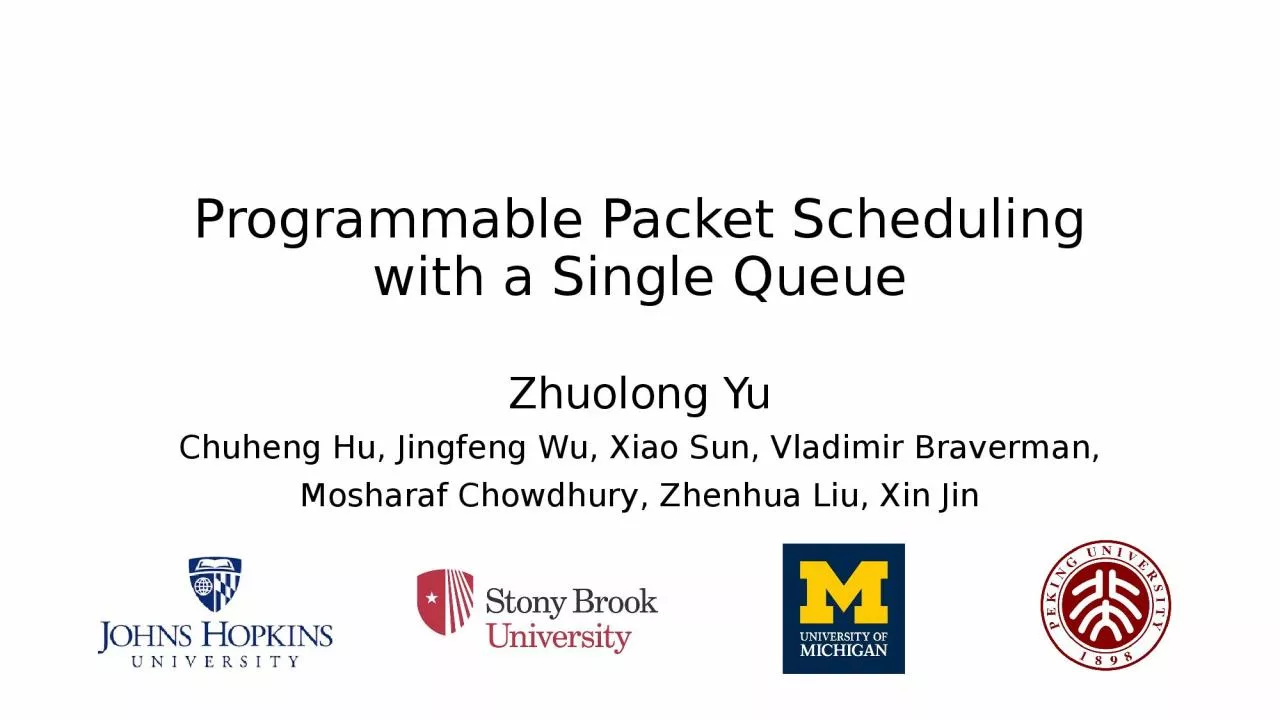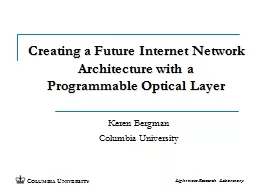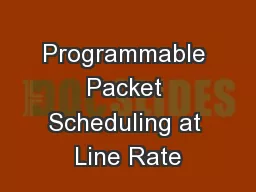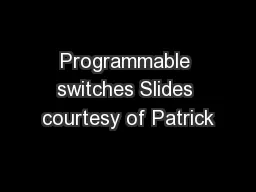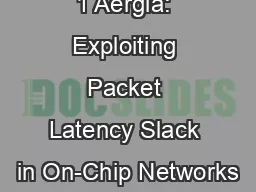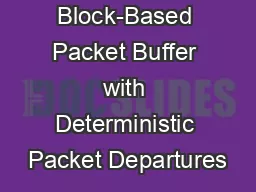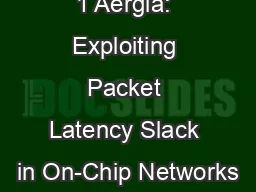PPT-Programmable Packet Scheduling
Author : KittyCat | Published Date : 2022-08-04
with a Single Queue Zhuolong Yu Chuheng Hu Jingfeng Wu Xiao Sun Vladimir Braverman Mosharaf Chowdhury Zhenhua Liu Xin Jin 1 Many packet scheduling algorithms
Presentation Embed Code
Download Presentation
Download Presentation The PPT/PDF document "Programmable Packet Scheduling" is the property of its rightful owner. Permission is granted to download and print the materials on this website for personal, non-commercial use only, and to display it on your personal computer provided you do not modify the materials and that you retain all copyright notices contained in the materials. By downloading content from our website, you accept the terms of this agreement.
Programmable Packet Scheduling: Transcript
Download Rules Of Document
"Programmable Packet Scheduling"The content belongs to its owner. You may download and print it for personal use, without modification, and keep all copyright notices. By downloading, you agree to these terms.
Related Documents

